
The Mojave Desert is a xeric desert in the rain shadow of the Sierra Nevada mountains in the Southwestern United States. It is named for the indigenous Mojave people. It is located primarily in southeastern California and southwestern Nevada, with small portions extending into Arizona and Utah.
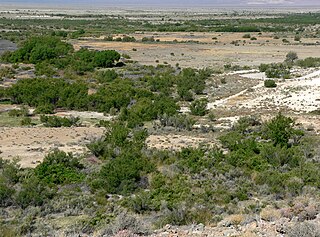
The Ash Meadows National Wildlife Refuge is a protected wildlife refuge located in the Amargosa Valley of southern Nye County, in southwestern Nevada. It is directly east of Death Valley National Park, and is 90 mi (140 km) west-northwest of Las Vegas.

The Amargosa Desert is located in Nye County in western Nevada, United States, along the California–Nevada border, comprising the northeastern portion of the geographic Amargosa Valley, north of the Ash Meadows National Wildlife Refuge

Schenkia sebaeoides, known as ʻĀwiwi in Hawaiian and lavaslope centaury in English, is a rare species of flowering plant. It is endemic to low shrublands in the state of Hawaiʻi in the United States. It is present on the islands of Kauai, Oahu, Lanai, Molokai, and Maui. At the time it was added to the endangered species list of the United States in 1991 it was known from seven populations for a total of fewer than 1000 individuals. It is threatened by habitat loss.

Calochortus striatus, known by the common name alkali mariposa lily, is a species of mariposa lily native to California and into Nevada.

Zeltnera muehlenbergii is a species of annual herb commonly known as Monterey centaury and Muhlenberg's centaury. It is native to western North America from British Columbia to California and Nevada, where it commonly grows in forests and other moist places. This is an annual herb growing thin, erect, branching stems to heights anywhere between 10 centimeters and one meter. Oval-shaped leaves are arranged oppositely on the stem and are up to 2 or 3 centimeters long. The branching inflorescence bears many flowers, each with small bracts at its base. The flower has five oval-shaped petallike lobes each a few millimeters long.

Enceliopsis nudicaulis is a North American species of flowering plants in the daisy family known by the common name nakedstem sunray, or naked-stemmed daisy.
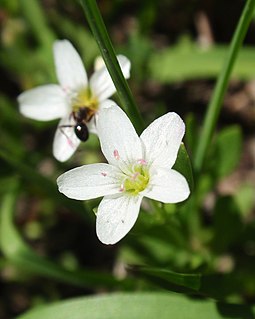
Montia chamissoi is a species of flowering plant in the family Montiaceae known by the common names of water minerslettuce, water montia, Indian lettuce, and toad lily. It is native to much of western North America from Alaska to the southwestern and central United States and also in British Columbia. It grows in moist to wet soils in a variety of habitat types, such as meadows, wetlands, plains, and montanes. It is sometimes aquatic, anchoring in mud and floating in water.

Nitrophila mohavensis is a rare species of flowering plant in the family Amaranthaceae known by the common name Amargosa niterwort. It is endemic to Nye County in southwestern Nevada and Inyo County, in eastern California.
Puccinellia howellii is a rare species of grass known by the common name Howell's alkaligrass. It is endemic to Shasta County, California, where it is known from a single population in Whiskeytown National Recreation Area near Whiskeytown. Its entire population is contained in a 1-acre (4,000 m2) complex of three saline mineral springs directly next to Highway 299. The grass was first described to science in 1990 and no other populations were discovered despite extensive searches of the area.
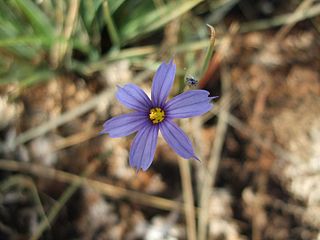
Sisyrinchium funereum is an uncommon species of flowering plant in the family Iridaceae known by the common names Funeral Mountain blue-eyed grass and Death Valley blue-eyed-grass. It is endemic to the Mojave Desert of the United States, where it is known only from the Funeral Mountains and Death Valley area in eastern California, and the Ash Meadows area just over the border in Nevada. It grows in wet, highly alkaline habitat, such as seeps and mineral springs.
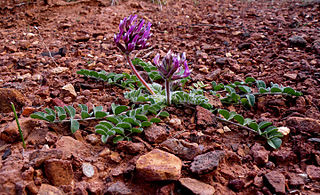
Astragalus holmgreniorum is a rare species of milkvetch known by the common names Holmgren milk-vetch and paradox milk-vetch. It is native to a tiny section of desert shrub woodland on the border between Utah and Arizona, in the far northern Mojave Desert. There are six populations remaining. It is a federally listed endangered species.

Astragalus phoenix is a rare species of milkvetch known by the common name Ash Meadows milkvetch. It is endemic to Nye County, in southwestern Nevada.
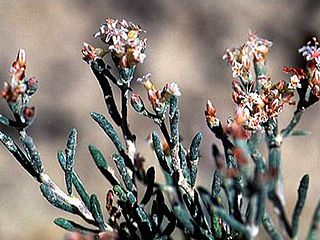
Eriogonum pelinophilum is a rare species of wild buckwheat known by the common name clay-loving wild buckwheat. It is endemic to the state of Colorado in the United States, where it is known from only two counties. The most recent estimates available suggest there are 12 occurrences in existence for a total of about 278,000 individual plants in Delta and Montrose Counties. At least 7 occurrences observed in the past have not been relocated but are not yet believed extirpated. This plant is federally listed as an endangered species of the United States.

Lepidium papilliferum is a rare species of flowering plant in the mustard family known by the common names Idaho pepperweed and slickspot peppergrass. It is endemic to Idaho in the United States, where it is mostly limited to a specific habitat type in the southwestern part of the state. It was federally listed as a threatened species in 2009.
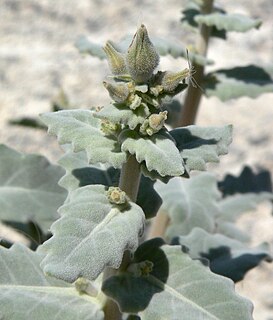
Mentzelia leucophylla, known by the common name Ash Meadows blazingstar, is a rare species of flowering plant in the Loasaceae. It is endemic to southwestern Nevada, in the Western United States.
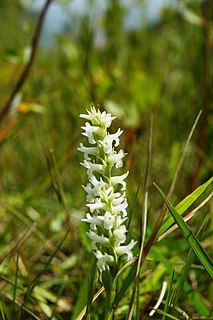
Spiranthes diluvialis is a rare species of orchid known as Ute lady's tresses. The species name diluvialis means "of the flood". It is native to the western United States, where there are scattered, mostly small occurrences in the states of Colorado, Idaho, Montana, Nebraska, Nevada, Utah, Washington, and Wyoming. An occurrence was recently discovered in southern British Columbia. The plant faces a number of threats to its existence. It is a federally listed threatened species of the United States.
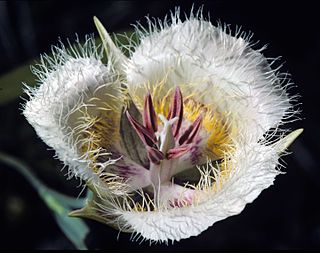
Calochortus coxii is a rare species of flowering plant in the lily family known by the common names Cox's mariposa lily and crinite mariposa lily. It is endemic to Oregon in the United States, where it is known only from Douglas County.

Zeltnera is a genus of flowering plants in the gentian family. It was erected in 2004 when the genus Centaurium was split. Genetic analysis revealed that Centaurium was polyphyletic, made up of plants that could be grouped into four clades. Each became a genus. Centaurium remained, but it is now limited to the Eurasian species. The Mexican species now belong to genus Gyrandra, and the Mediterranean and Australian plants are in genus Schenkia. The new name Zeltnera was given to this genus, which contains most of the North American centauries. There are about 25 species.

Grindelia fraxinipratensis, common name Ash Meadows gumweed, is a North American species of flowering plants in the family Asteraceae. It is native to the southwestern United States, in Mojave Desert regions in Nye County in Nevada and Inyo County in California. Some of the Nevada populations lie inside the Nevada Test Site of the United States Atomic Energy Commission





















